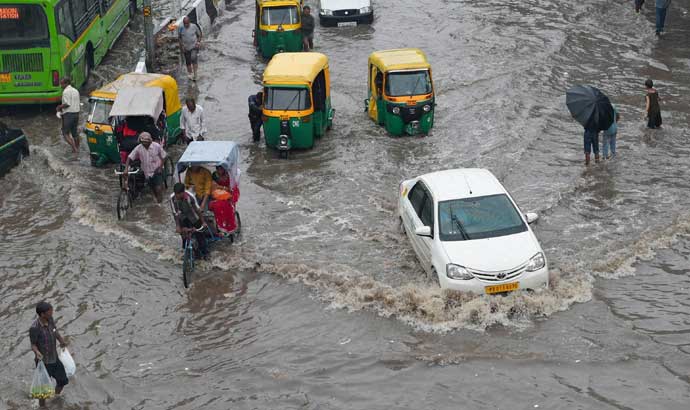Why ITO skywalk is no easy fix for Delhi's traffic snarls

Delhi's ITO area happens to be one of the busiest intersections for pedestrians with close to one lakh people - half the population of a city like Shimla - crossing it daily. A skywalk is being constructed at the junction, at an estimated Rs 50 crore, to bridge the distance of more than half a kilometre, which essentially means pedestrians would have to walk this stretch to cross the road.
Though it sounds fancy, it is a globally accepted norm for pedestrians to use foot over-bridges as cars move smoothly on the roads below. While the initial expenditure of Rs 50 crore seems to present no cost to the pedestrian, at some point in future, questions about logistics and maintenance, who would bear the cost of escalators and elevators, et al would arise. How will the differently-abled commute using the skywalk?
Besides, there has not been a single instance where a survey or an opinion of the pedestrians themselves was generated to gauge how they see their movement on the road. After all, these skyways are to be used by them. This scope of democratic participation is absent in the entire development trajectory, which is Centre-driven and without any participation of the people.
I remember a discussion at international conference on urban development organised by the London School of Economics in which former chief minister of Delhi Sheila Dikshit, the mayor of Colombian city Bogota and I had participated. The mayor of Bogota asked Dikshit why the BRT, envisioned by the Delhi government during the Commonwealth Games, was abandoned so rapidly. She responded that there was pressure from ordinary citizens and hence the project had to be shelved!

The mayor then pointed out that just 16 per cent of Delhi's citizens owned cars, the rest evidently commute using public transport, or are pedestrians. Were they not the ordinary citizens for her? Pedestrians are not even considered commuters or taken into consideration in the modern realm of urban planning or mobility.
This also reminds me of a statement by Mike Davis in his infamous "Planet of slums", where middle-class "encroachment" is elaborately focused upon. Is this elevation of pedestrians to the skyways and the smooth flow of traffic on the road not akin to Davis' assertion?
But this is not the universal form of planning. During a fellowship programme on urban mobility at Germany's Leipzig, I confronted an altogether different paradigm of urban planning in which pedestrians were prioritised - they would be the ones to have the first access. Interestingly, Leipzig, predominantly pedestrian and bicycle-friendly, decided to remove all skyways and give more space to pedestrians and bicycles, also coercing ordinary citizens from using their cars in the city.
Leipzig has eight lanes that are being reduced to six, with two being dedicated to pedestrian use. But this is not the real paradox. The city sustains itself as the giant manufacturing hub of Porsche cars - a major chunk of the employment comes from the automobile sector.
Asked about this paradox - what they seemed to practise was contrary to what they produced, so for whom were these cars manufactured - the prompt response was: the cars are being manufactured for you! That is, we who live in the developing world, who have a rising middle class with growing aspirations and for whom the smooth movement of such cars is required in cities like Delhi!
Is this what we call modern transport: cars on the roads and pedestrians in the sky?

